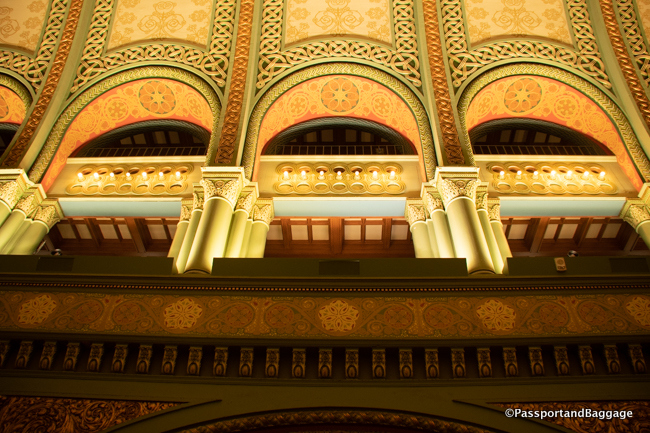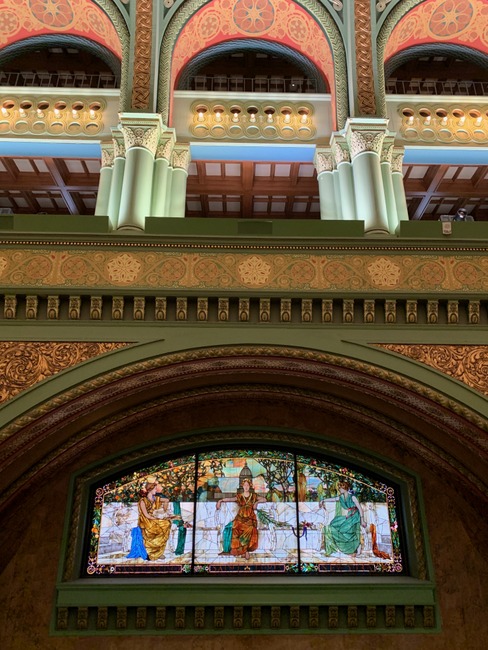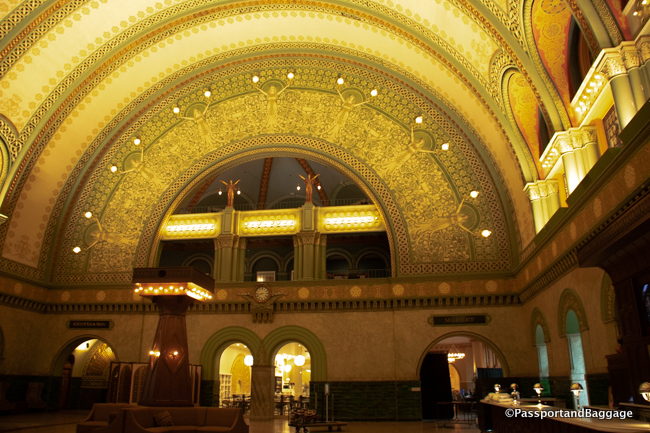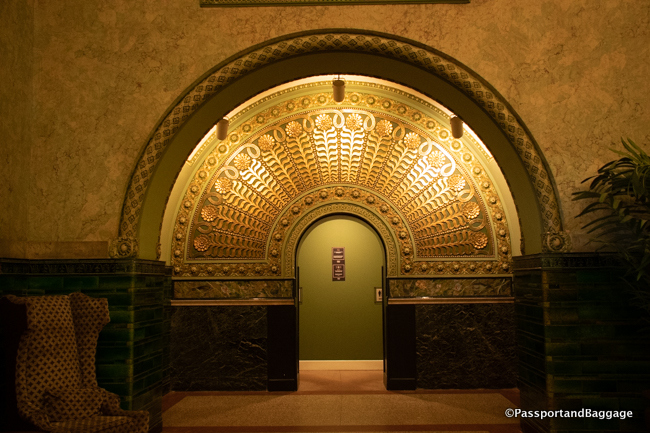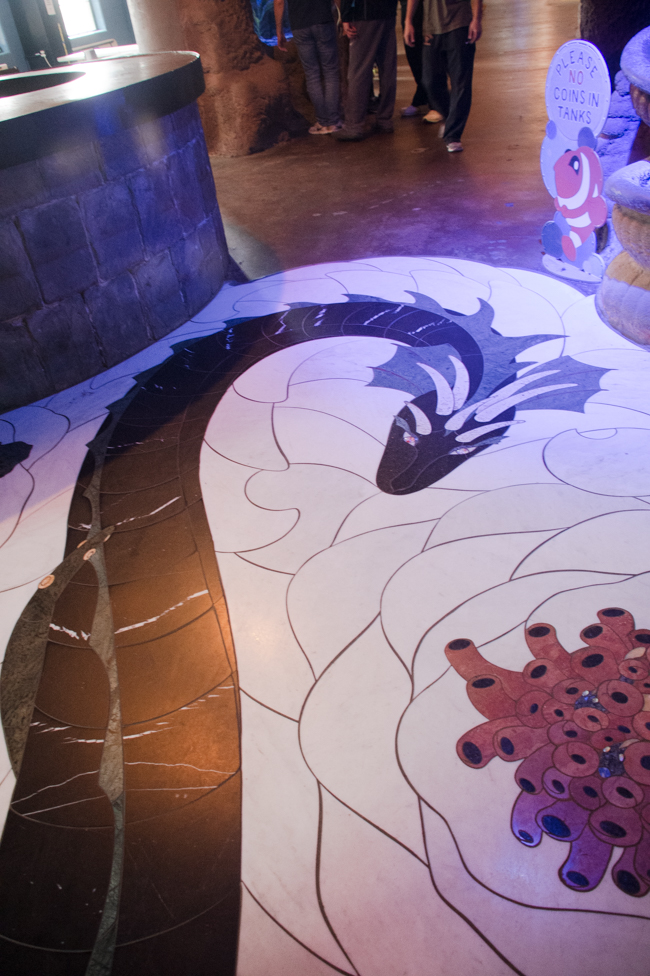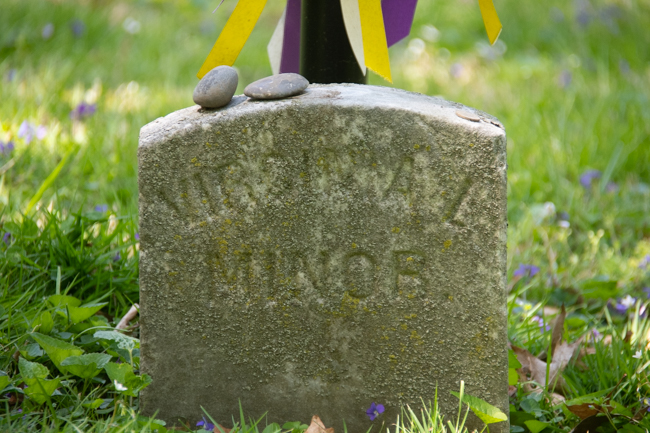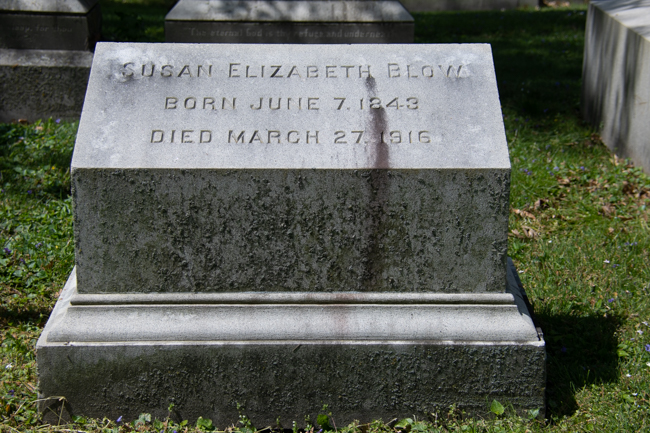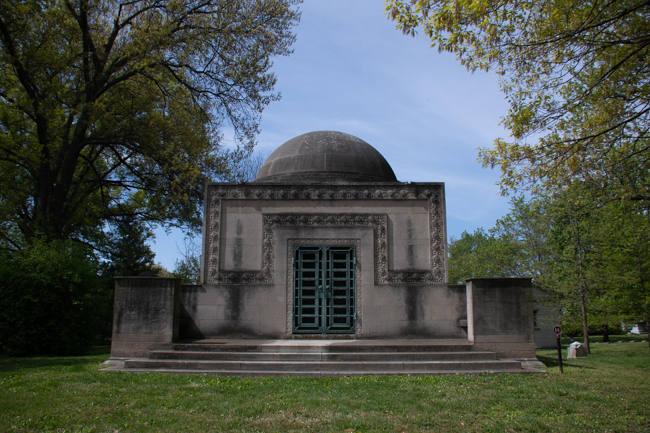April 2021
The Union Station Hotel in St. Louis

Designed by the St. Louis firm of Theodore C. Link, the 600-foot long granite structure stylistically reflects the Romanesque influence of H. H. Richardson.
Now a National Historic Landmark the St. Louis Union Station was opened in 1894. At its opening it was the largest in the world with tracks and passenger service areas all on one level. Traffic peaked at 100,000 people a day the 1940s. The last Amtrak passenger train left the station in 1978.
In the 1980s, it was renovated as a hotel, shopping center, and entertainment complex. with two more renovations in 2010 and 2020. The shopping center and entertainment complex is a blight with loud music, horrible restaurants and a feeling of a tacky and cheap town.
The lobby of the hotel has kept its historical quality and is worth a visit or a drink in the bar. The hotel itself is a Hilton, and not one this author would recommend.

This gothic corridor with gracefully vaulted ceiling once lead to a Renaissance private Dining Room.
City Museum St. Louis
City Museum is a one-hundred-year-old warehouse in downtown St. Louis in which artists have repurposed found items to build miles of tunnels, slides, climbers, bridges, and castles. There are secret passages and grand galleries, playgrounds and ball pits, a circus and a train and a rooftop with a school bus and a Ferris wheel.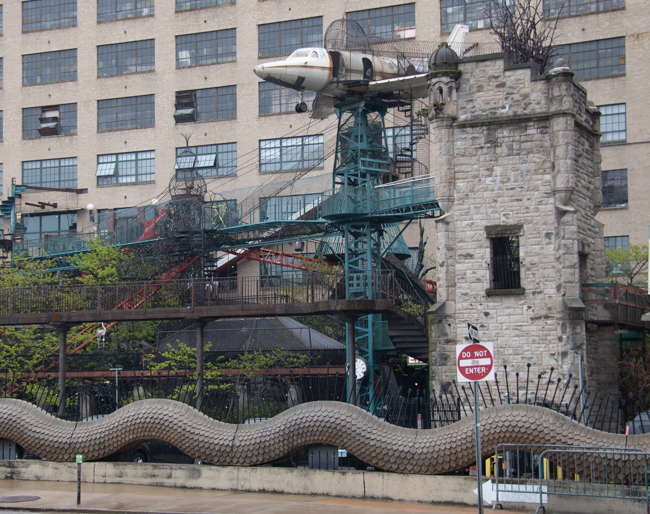
The amazing part of the museum, to this architecture history nut was the two floors of rescued building parts from now vanished buildings.
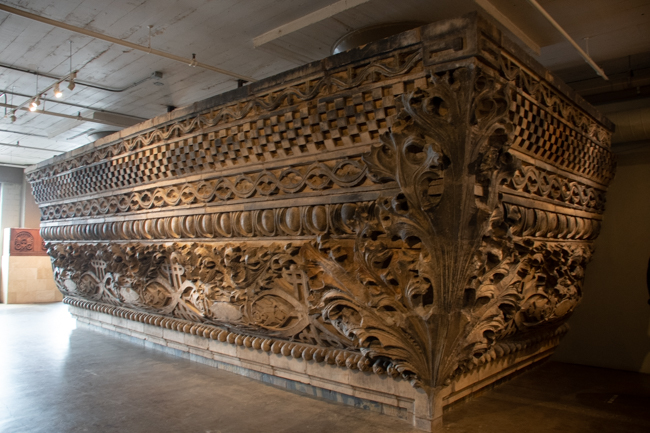
This amazing cornice is from the Wainwright Building that stood at the NE corner of 7th and Chestnut. Built in 1891 it was designed by Adler and Sullivan, with the chief Draftsman being Frank Lloyd Wright.
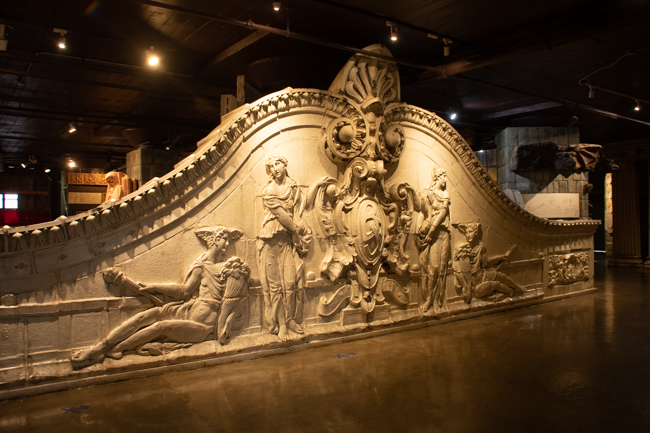
This terra-cotta pediment once crowned the Broadway Strand Museum in Chicago. Built in 1917, the building was demolished in 1998.
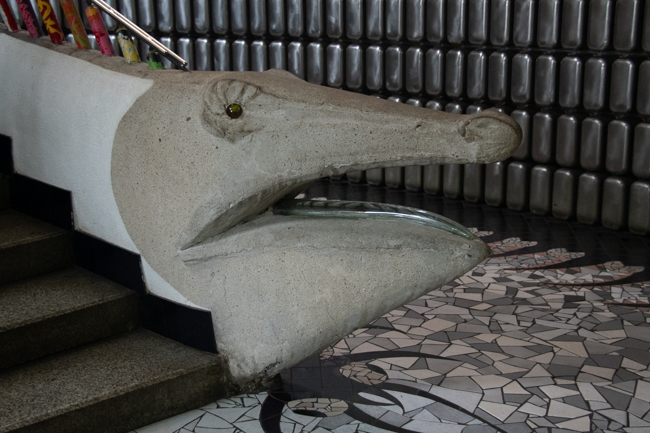
Behind this fish you will see a wall of stainless steel pans originally used as steam table pans for food service.
Everywhere you look there are elaborate mosaic floors. In the beginning several artists were brought in to create the mosaics, but eventually it was reduced to one, Sharon von Senden. Tile used in the museum comes from a variety of sources, including donations, closeouts, or surplus. Due to the shifting concrete slabs and heavy traffic, new designs are always being laid as the floors are repaired.
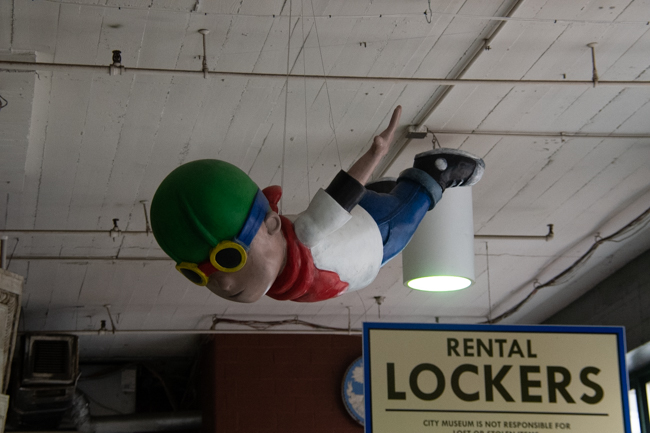
Bellefontaine Cemetery
A trip through any town would not be complete without a visit to a cemetery for this taphophile.
In 1849, the Rural Cemetery Association purchased the former Hempstead family farm located five miles northwest of the St. Louis, with the intent to turn it into a large rural cemetery modeled after Père Lachaise Cemetery in Paris and Mount Auburn Cemetery in Massachusetts. The 138-acre Hempstead farm was situated along the road to Fort Bellefontaine, and as a result the Association decided to name its new cemetery after the fort. Within a few months, the Association had hired landscape architect Almerin Hotchkiss, who helped design Green-Wood Cemetery in Brooklyn, New York, to implement a master plan. The Cemetery is a stunning arboretum with a botanical garden and landscaping that invites one to wander for hours.
There are several notable people buried in the cemetery, these are just a few.
Virginia Louisa Minor (March 27, 1824 – August 14, 1894) was an American women’s suffrage activist. She is best remembered as the plaintiff in Minor v. Happersett, an 1874 United States Supreme Court case in which Minor unsuccessfully argued that the Fourteenth Amendment to the United States Constitution gave women the right to vote.
Susan Elizabeth Blow (June 7, 1843 – March 27, 1916) was an American educator who opened the first successful public kindergarten in the United States. She was known as the “Mother of the Kindergarten.”
The grave of William Clark of the Meriwether Lewis and Clark Expedition of 1804 – 1806. The men led the first major effort to explore and map much of what is now the Western United States.
The Wainwright Mausoleum was designed by renowned architect Louis Sullivan. The mausoleum was addd to the National Register of Historic Places in 1970.
Compton Hill Water Tower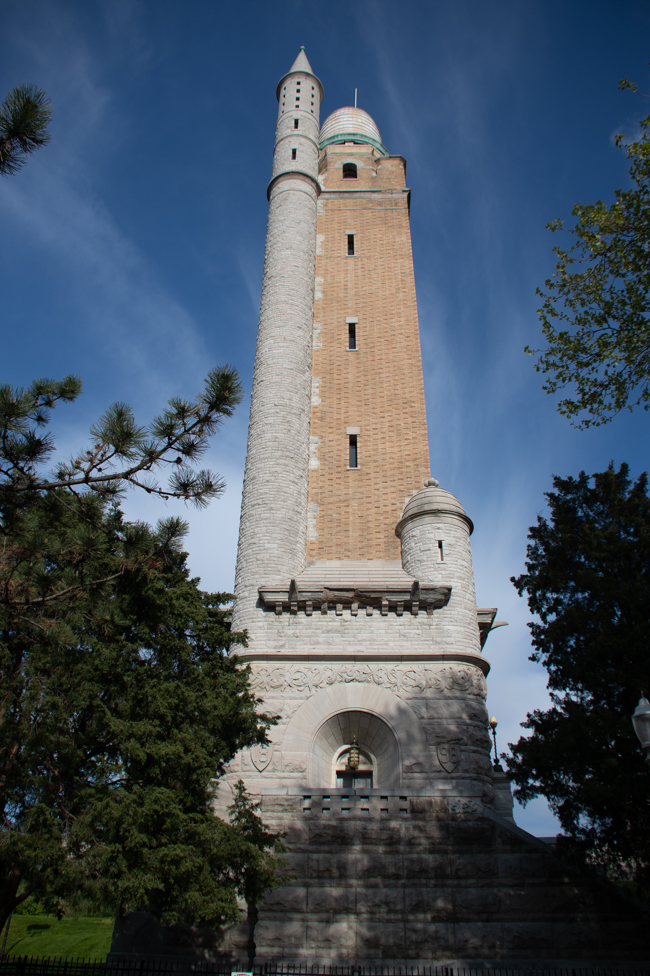
The Water Tower sits adjacent to the Compton Hill Reservoir and was the third to be built in the St. Louis (after the Grand Avenue Water Tower and the Bissell Street Water Tower). Located at Grand and Russell Avenues, the tower stands 179 feet high and is 130 feet around at the base. It was designed by Harvey Ellis, for the firm of George R. Mann in 1897.
The three water towers were actually standpipes encased in architectural towers and a vital part of the City’s early water system. The standpipes absorbed surges from the late-19th-century reciprocating water pumps, providing consistent water pressure. In 1972, The Compton Hill Water Tower was placed on the National Register of Historic Places.
St. Louis is an amazingly rich town in art, architecture and culture, I wish I had had more time.
